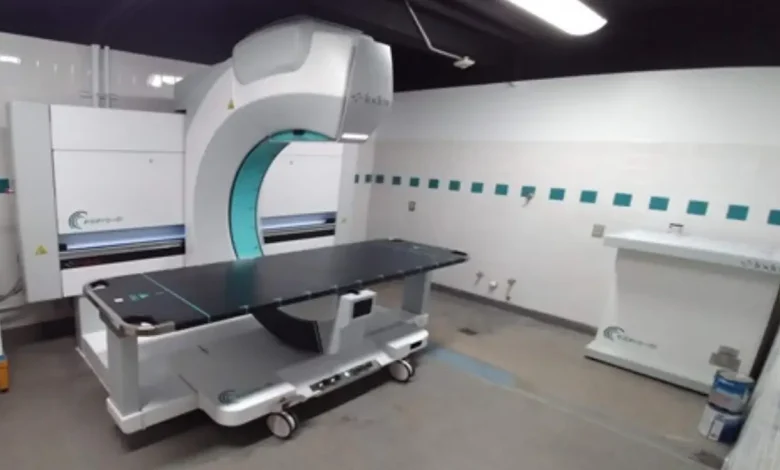Gauteng’s Plan to Equip All Clinics with X-rays by 2026

Table of contents
- Why Gauteng Is Investing in Clinic X-ray Technology
- How X-ray Machines Will Improve Patient Care
- Who Will Benefit Most from the X-ray Expansion
- Where X-ray Equipment Will Be Installed Across Gauteng
- When to Expect the Full Implementation
- What Challenges Are Anticipated and How Are They Addressed
- How This Initiative Fits Within Gauteng’s Broader Health Strategy
- The Role of Healthcare Workers in Maximizing This Upgrade
- Gauteng’s Vision for Diagnostic Services Beyond 2026
Gauteng is about to change how millions get medical diagnoses. By 2026, every clinic in the province will have X-ray machines. This brings important imaging services closer to local communities. It will speed up early detection, improve treatment results, and cut down on trips to busy hospitals. Led by the Department of Health, this plan will make quality, timely healthcare easier to access for all Gauteng residents.

ALSO READ: Gauteng Clinics Now Equipped with X-ray Machines for Faster Diagnoses
The decision to add X-rays to all clinics fixes long-standing gaps in service, especially in underserved areas. This upgrade will help healthcare workers, speed up treatment, and support Gauteng’s goal of quality, accessible healthcare for everyone.
Why Gauteng Is Investing in Clinic X-ray Technology
Gauteng’s healthcare infrastructure recognizes the urgent need to decentralize diagnostic tools. Currently, many clinics lack onsite imaging, which causes delays because patients must travel to hospitals for X-rays. As a result, diagnosis and treatment take longer, often worsening health outcomes. By providing X-ray machines directly in clinics, these barriers are removed, allowing for faster and more precise medical decisions. Furthermore, this expansion supports better management of high patient loads. With more immediate access to imaging, healthcare practitioners can reduce unnecessary hospital visits, which in turn eases pressure on overcrowded emergency departments and specialist facilities across the province.
“To improve access and strengthen primary healthcare services, we have successfully installed the much-needed X-ray machines in Westbury, Florida, and Fanyana Nhlapo. Community Health Centres as part of our commitment to improve diagnostics in local communities,” said MEC Nkomo-Ralehoko
during the Budget Vote.
How X-ray Machines Will Improve Patient Care
Integrating X-ray units in clinics facilitates quicker detection of injuries and illnesses such as fractures, pneumonia, and tuberculosis. Early diagnosis is crucial, especially for conditions that require prompt intervention. The presence of X-ray services onsite means patients no longer face prolonged waiting times or the challenge of traveling long distances for scans.
Moreover, this upgrade helps reduce psychosomatic pain misdiagnosis by giving physiotherapists and clinicians direct insight into physical conditions early on. It fosters holistic patient care by combining clinical evaluation with imaging results immediately.
Who Will Benefit Most from the X-ray Expansion
The most immediate beneficiaries of this initiative include rural and peri-urban communities where diagnostic services are limited. Vulnerable groups such as children, elderly patients, and those with chronic illnesses will gain from timely, locally available imaging. Clinics serving high tuberculosis prevalence areas will particularly benefit, improving early detection and treatment adherence.
Thembokuhle Ntuli-Karigani, Chief Director of West Rand Health Services, said installing X-ray machines in all clinics improves access, quality, and safety of care especially for trauma patients.
“It is common that undiagnosed or mismanaged fractures can lead to permanent disability, infection, or improper healing. With this advanced medical technology, our local communities are now able to access early imaging to ensure timely and appropriate care,” said Ntuli-Karigani.
Where X-ray Equipment Will Be Installed Across Gauteng
The rollout targets all public primary healthcare clinics spread throughout the five health districts: Johannesburg, Tshwane, Ekurhuleni, Sedibeng, and West Rand. Priority will be given to clinics with high patient traffic and those identified as underserved for diagnostic imaging services.
Each selected clinic will undergo infrastructure readiness assessments to accommodate the machines safely. Locations such as Sebokeng Hospital’s affiliated clinics will see these advancements closely tied with ongoing upgrades like the Sabokeng Regional Hospital’s “I Serve with a Smile” compassionate care campaign.
When to Expect the Full Implementation
The Gauteng Department of Health has set an official deadline of 2026 to ensure every public clinic has operational X-ray imaging. The phased approach began with pilot programs initiated in 2024 and 2025, assessing logistics, training needs, and equipment performance.
This timeline also aligns with broader provincial health goals, including continued investments in facility infrastructure and digital health tools highlighted at recent forums like the 5th African Nursing Conference.
What Challenges Are Anticipated and How Are They Addressed
Rolling out advanced diagnostic equipment province-wide is not without challenges. Infrastructure upgrades, maintenance, and skilled personnel shortages can pose barriers. To tackle these, Gauteng has introduced comprehensive training programs for healthcare workers, including physiotherapists and nurses, enhancing their capability to operate and interpret X-rays effectively.
Continuous monitoring through an Infection Prevention and Control (IPC) committee ensures that the new equipment meets safety standards, avoiding hospital-associated infections in clinics. Additionally, partnerships with private and academic institutions will support sustainable management of the technology.
How This Initiative Fits Within Gauteng’s Broader Health Strategy
This X-ray expansion works alongside other efforts such as setting up human Milk Banks, expanding measles vaccination campaigns, and improving infection control in hospitals. Together, these actions show Gauteng’s holistic approach to strengthening health services.
By embedding diagnostic technology into primary care, the province aims to reduce the burden on hospitals, accelerate disease management, and foster community trust in the public health system, all critical to achieving resilient and inclusive healthcare delivery.
The Role of Healthcare Workers in Maximizing This Upgrade
Healthcare professionals, including nurses, physiotherapists, and clinicians, are central to the success of the X-ray rollout. Their active involvement in training, patient education, and compassionate care is essential to maximize the benefits of onsite imaging.
Initiatives like the “Serve with a Smile” campaign emphasize the human connection in medicine, ensuring patients feel supported and understood even as technology advances. Empowered with better tools and patient-centered approaches, healthcare workers will enhance diagnosis accuracy and treatment effectiveness.
Gauteng’s Vision for Diagnostic Services Beyond 2026
Gauteng plans to integrate digital health solutions with X-ray technology, allowing remote consultations and AI-assisted image analysis, as mentioned by experts at nursing conferences. This digital integration will further improve diagnostic accuracy and faster referral decisions.
Moreover, continuous investment in healthcare education and infrastructure will support sustained growth in diagnostic capabilities, placing Gauteng as a leader in accessible and innovative healthcare services in Africa.




